Interviews with Experts
8 Essential Strategies for Pest Management in Organic Orchards
In organic orchards, mastering pest management is paramount to preserving your precious produce. From fostering natural predators to employing pheromone lures, there are 8 essential strategies that can help you safeguard your orchard from the threat of pests.
But how exactly do these strategies work in tandem to protect your orchard? Let’s explore the intricacies of each method and how they can be integrated into a comprehensive pest management plan that ensures the health and productivity of your organic orchard.


Key Takeaways
- Natural predators and biological control methods, such as ladybugs, lacewings, and predatory mites, are important for maintaining a balanced ecosystem and controlling orchard pests.
- Traps and pheromone lures, when properly placed, can effectively capture and trap insects, disrupt mating patterns, and reduce chemical exposure in organic orchards.
- Neem oil is a natural pesticide derived from the neem tree that can be effective against a broad spectrum of pests, but it may also harm beneficial insects.
- Soil health plays a crucial role in orchard management, as it provides nutrients, water retention, and a hospitable environment for beneficial soil organisms. Strategies like crop rotation, cover cropping, and compost application can enhance soil health and reduce the need for synthetic inputs in organic orchards.
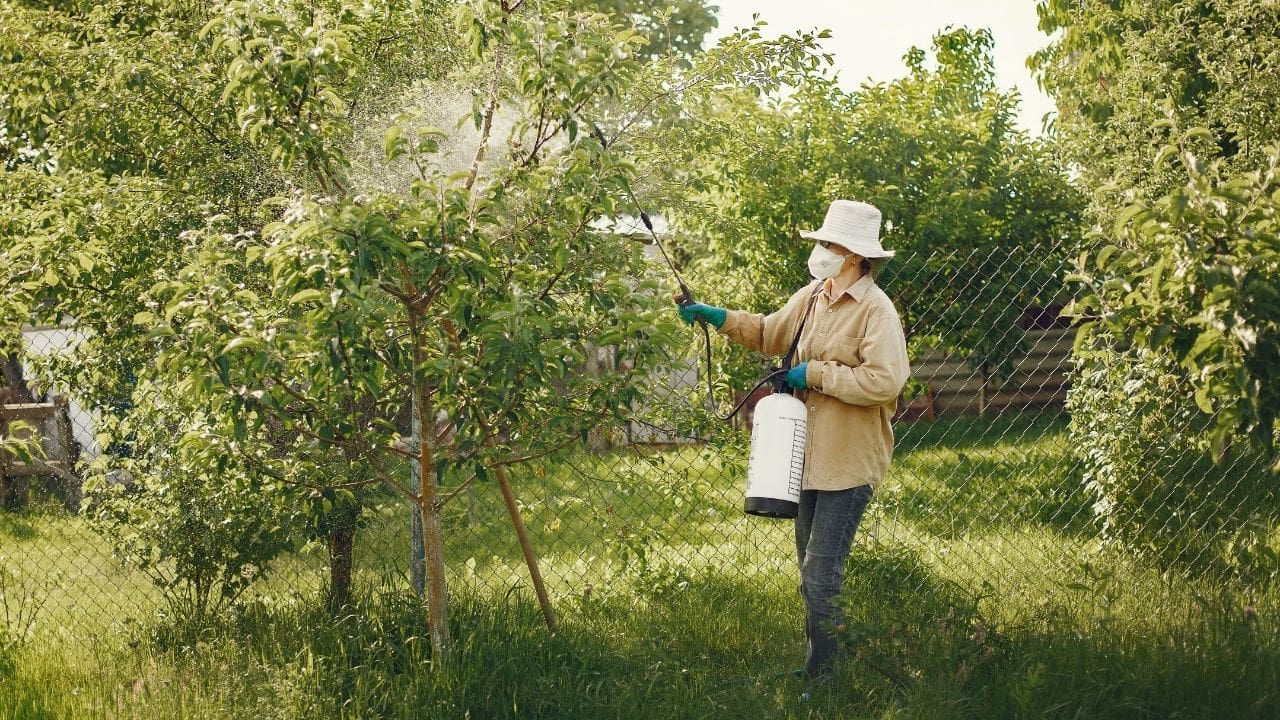

Natural Predators
Natural predators play a crucial role in controlling pest populations in organic orchards. By preying on pests such as aphids, mites, and caterpillars, natural enemies like ladybugs, lacewings, and predatory mites help maintain a balanced ecosystem within the orchard. These predators act as a biological control method, reducing the need for chemical pesticides and promoting a safer environment for both the produce and the workers.
Ladybugs, also known as ladybird beetles, are voracious predators of aphids and other soft-bodied insects. Their larvae are equally effective, consuming large numbers of aphids during their development.
Lacewings are another valuable ally in the battle against orchard pests. Their larvae, commonly referred to as aphid lions, are aggressive predators that consume aphids, mites, and other small insects.
Predatory mites, such as Phytoseiulus persimilis, feed on pest mites like the two-spotted spider mite, helping to keep their populations in check.
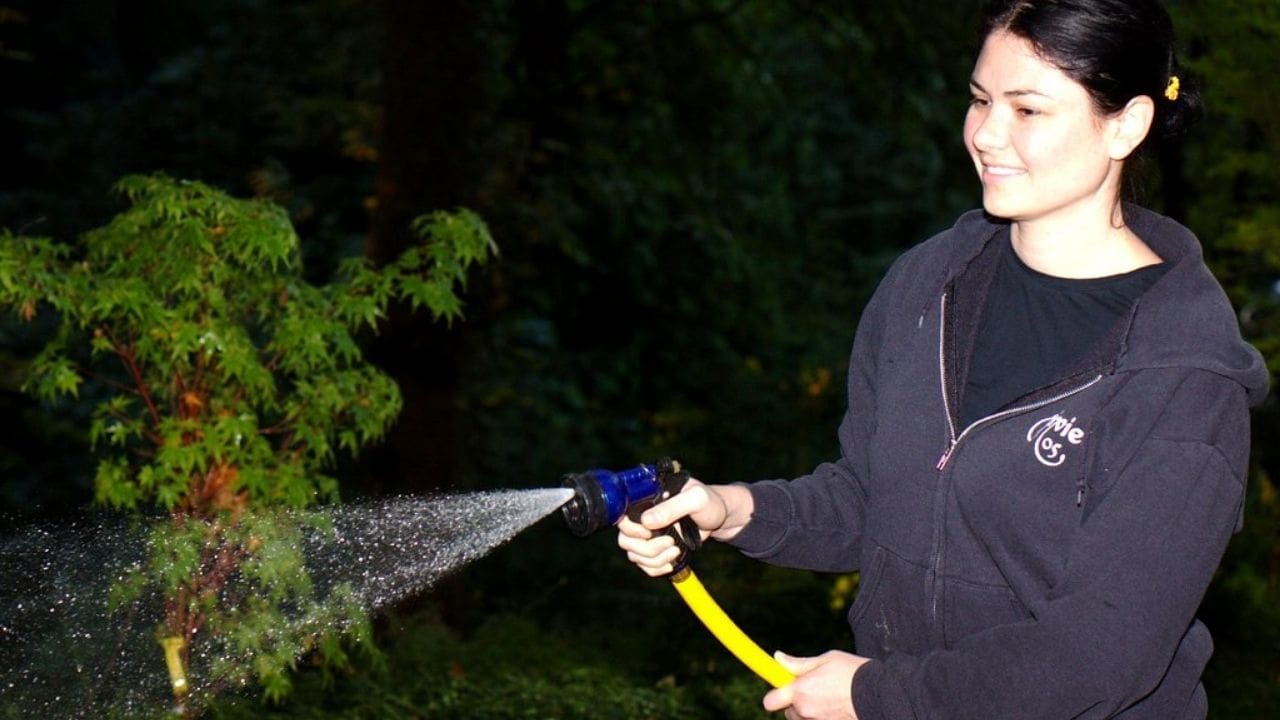

Insect Traps
You can enhance your pest management strategy in organic orchards by utilizing insect traps.
Understanding trap types and their specific benefits is crucial for effective pest control.
Additionally, proper placement of traps plays a significant role in maximizing their efficiency.
Trap Types
Various types of insect traps are utilized in organic orchards to effectively monitor and manage pest populations.
The most commonly used trap types include sticky traps, pheromone traps, and light traps. Sticky traps, also known as glue traps, are coated with a sticky substance that captures insects upon contact.
Pheromone traps use synthetic versions of insect pheromones to attract and trap specific pests. These traps are highly effective for monitoring and controlling targeted pest species.
Light traps, on the other hand, use ultraviolet light to attract insects, which then get trapped in a container.
Understanding the specific pest species and their behavior is crucial in selecting the most suitable trap type for effective pest management in organic orchards.
Regular monitoring and proper placement of these traps are essential for successful pest control.
Placement Tips
How can the placement of insect traps in organic orchards contribute to effective pest management?
Proper placement of insect traps is crucial for maximizing their effectiveness in controlling pest populations. When situating traps, consider the specific pest species targeted and their behavior patterns.
For instance, place traps near entry points to the orchard, as well as along the edges, to intercept pests before they reach the trees. Additionally, position traps at varying heights to capture pests that may fly or crawl at different levels.
Regularly monitor and adjust trap placement based on pest activity and environmental conditions. Strategic placement not only increases trap efficiency but also reduces the reliance on other pest control methods, contributing to a safer and more sustainable orchard environment.
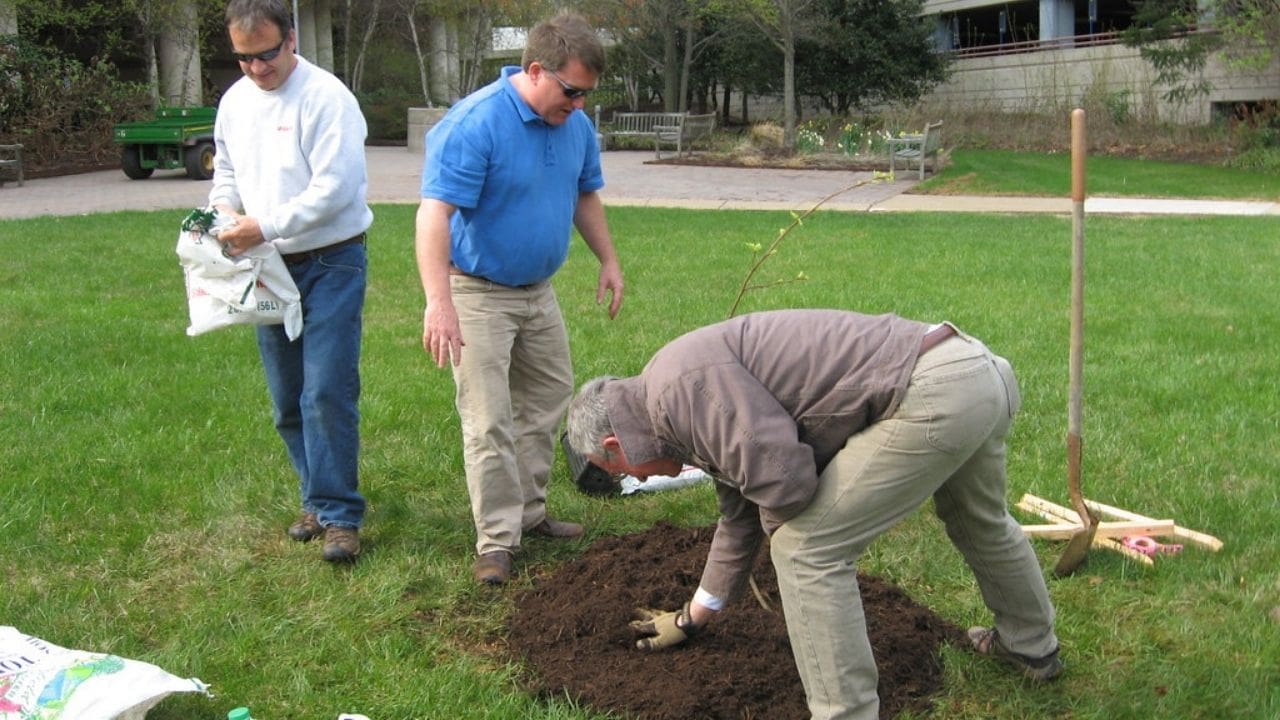

Neem Oil
Neem oil, derived from the seeds of the neem tree, is a widely recognized and effective botanical insecticide used in organic orchards for pest management. It contains azadirachtin, a compound that disrupts the growth and development of insect pests, making it a valuable tool for organic growers.
When using neem oil, ensure to follow the application instructions carefully. Dilute the oil according to the manufacturer’s recommendations and apply it during the cooler hours of the day to prevent leaf burn.
Neem oil can be effective against a broad spectrum of pests including aphids, mites, caterpillars, and beetles. However, it’s important to note that it may also affect beneficial insects such as bees and ladybugs, so use it judiciously and avoid applying it to blooming plants.
Remember to wear protective clothing, including gloves and a mask, when handling and applying neem oil to minimize skin and respiratory irritation.
Always store neem oil out of reach of children and pets, and dispose of any unused product properly according to local regulations.
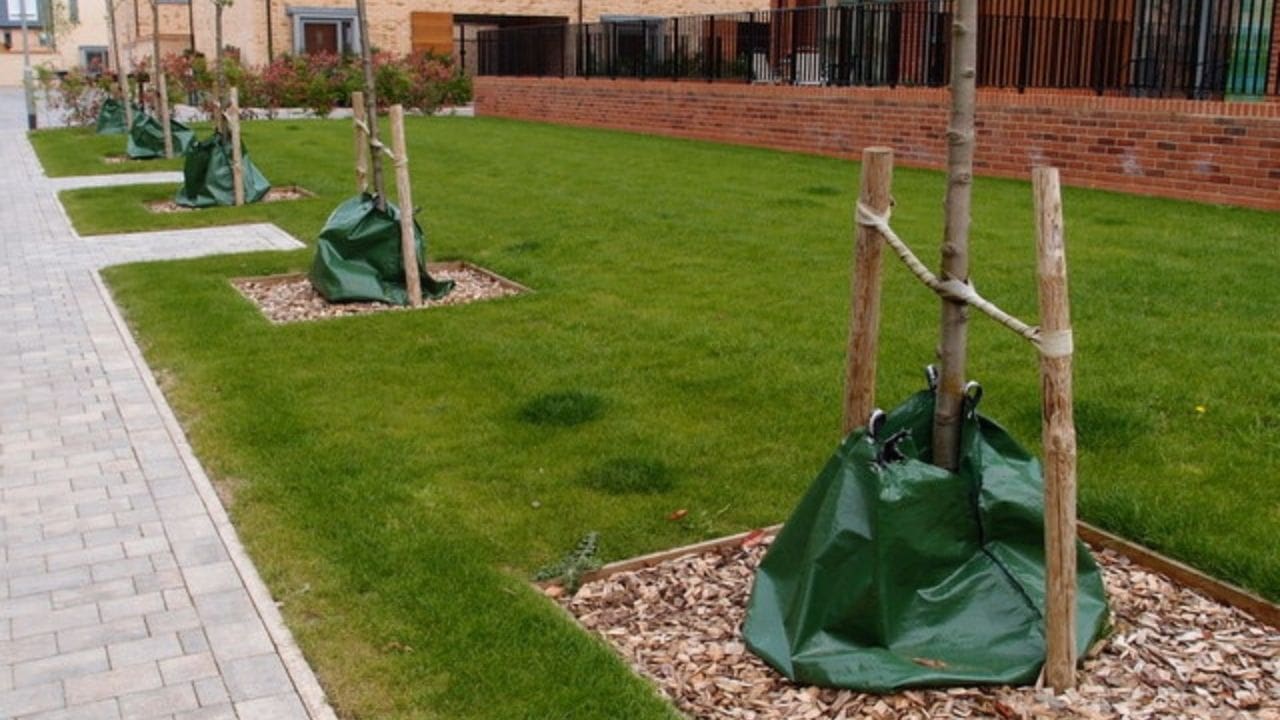

Companion Planting
When considering pest management strategies in organic orchards, such as the use of neem oil, the practice of companion planting emerges as an important technique for promoting natural pest control and enhancing overall orchard health. Companion planting involves growing specific plants alongside the main crop to provide benefits such as attracting beneficial insects, repelling harmful pests, and improving soil health.
Here are a few key points to consider:
- Interplanting aromatic herbs like basil and mint can help deter pests such as aphids and whiteflies while attracting pollinators like bees.
- Growing flowers like marigolds and calendula near fruit trees can repel nematodes and other soil-borne pests, thus promoting a healthier root system.
- Planting alliums like garlic and onions can deter pests like codling moths and apple maggots, reducing the need for chemical interventions.
- Incorporating nitrogen-fixing plants such as legumes can improve soil fertility, leading to stronger, more resilient trees.
- Utilizing trap crops like nasturtiums can divert pests away from the main crop, protecting the orchard without the use of harmful chemicals.
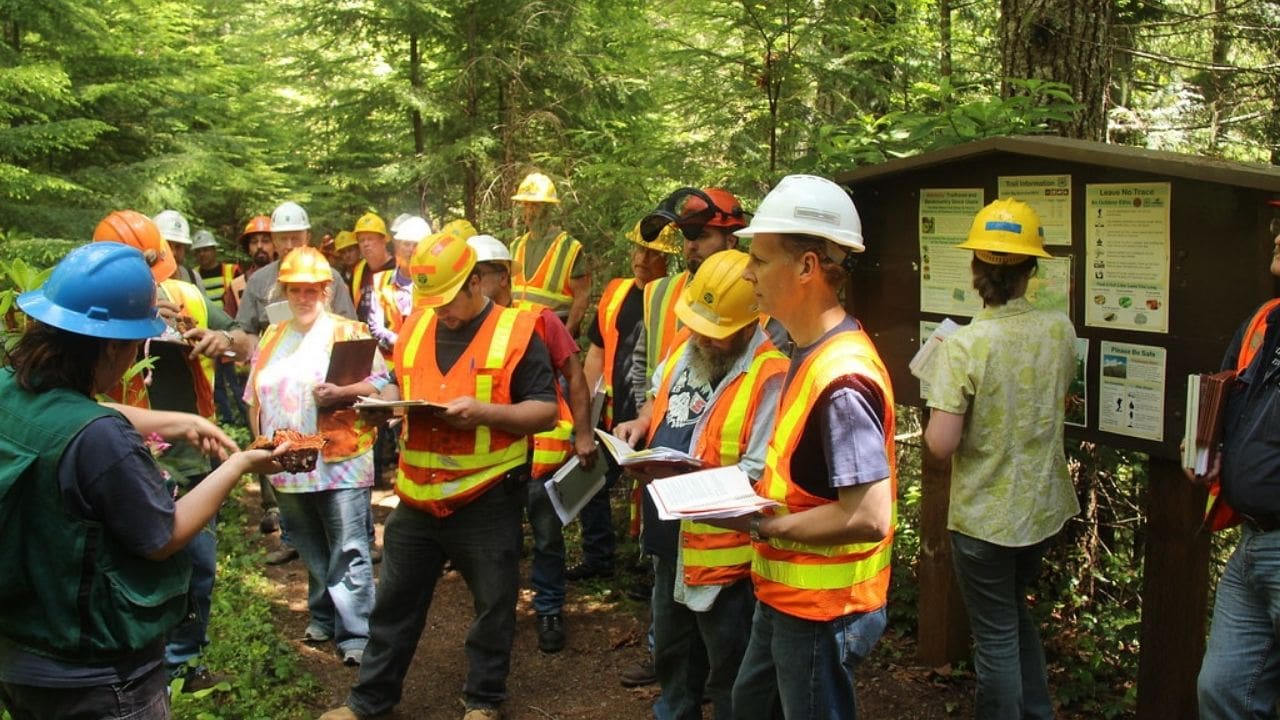

Biological Control
Biological control methods involve the introduction or enhancement of natural predators, parasites, or pathogens to manage pest populations within organic orchards. This approach is based on the natural balance of predator-prey interactions and can be an effective tool for managing pests without the use of synthetic chemicals.
One commonly used biological control method is the introduction of beneficial insects, such as ladybugs, lacewings, or parasitic wasps, which can help control aphids, mites, and other orchard pests. Additionally, certain microorganisms like Bacillus thuringiensis (Bt) can be used to target specific insect pests while being safe for humans and the environment.
When implementing biological control methods, it’s crucial to conduct thorough research on the specific pests and their natural enemies in the orchard ecosystem. Understanding the life cycles and behaviors of both pests and beneficial organisms is essential for successful biological control. Monitoring pest populations and the effectiveness of natural enemies is also important to make informed decisions about the need for additional interventions.
Pheromone Lures
Enhancing your biological pest management approach, pheromone lures are a strategic tool for attracting and trapping specific orchard pests, disrupting their mating patterns and overall population. Pheromone lures are synthetic versions of insect pheromones, the chemical signals that insects use to communicate with each other.
By strategically placing these lures in your orchard, you can effectively manage pest populations while minimizing the use of chemical pesticides. Here’s why pheromone lures are an essential component of your pest management strategy:
- Environmentally Friendly: Pheromone lures target specific pests, reducing the need for broad-spectrum pesticides that can harm beneficial insects and the overall ecosystem.
- Safe for Beneficial Insects: Unlike chemical pesticides, pheromone lures don’t harm beneficial insects such as bees and natural predators, ensuring a balanced and healthy orchard ecosystem.
- Reduced Chemical Exposure: By using pheromone lures, you can significantly reduce your exposure to potentially harmful chemical pesticides, promoting a safer working environment for you and your workers.
- Sustainable Pest Management: Implementing pheromone lures aligns with sustainable agricultural practices, contributing to the long-term health and productivity of your orchard.
- Effective Pest Control: Research has shown that pheromone lures are highly effective in reducing pest populations, leading to healthier trees and higher-quality fruit.


Soil Health
To optimize the productivity and health of your orchard, maintaining optimal soil health is crucial for supporting the growth and vitality of your fruit trees. Healthy soil serves as the foundation for a thriving orchard ecosystem, providing essential nutrients, water retention, and a hospitable environment for beneficial soil organisms. Organic orchard management practices prioritize soil health to minimize the need for synthetic inputs and enhance the long-term sustainability of the orchard.
Soil health can be enhanced through several key strategies. First, implementing crop rotation and cover cropping helps maintain soil structure and fertility, reducing the risk of erosion and nutrient depletion. Additionally, the application of organic mulches and compost contributes to improved soil moisture retention and nutrient availability, fostering a balanced and resilient soil ecosystem. Monitoring soil pH levels and conducting regular soil tests are essential for identifying any potential deficiencies or imbalances, allowing for targeted and precise soil amendments.
Furthermore, promoting biodiversity within the soil through the use of diverse cover crops and minimal soil disturbance encourages the proliferation of beneficial microorganisms, promoting a healthy and balanced soil microbiome. By prioritizing soil health in your organic orchard management practices, you can cultivate a robust and sustainable foundation for the long-term success of your fruit trees while minimizing environmental impact and ensuring the safety of your produce.
Crop Rotation
Optimizing the productivity and health of your orchard relies on maintaining optimal soil health, and an essential aspect of achieving this is implementing effective crop rotation practices. Crop rotation involves alternating the types of crops grown in specific areas of the orchard over time to improve soil fertility, reduce pest and disease pressure, and enhance overall orchard health.
Here are five critical reasons why implementing crop rotation is crucial for the success of your organic orchard:
- Disease Management: Rotating crops helps break the life cycles of pests and diseases, reducing their buildup in the soil and lowering the risk of crop damage.
- Soil Health: Different crops have varying nutrient needs, and rotation helps maintain soil fertility by preventing depletion of specific nutrients.
- Weed Control: Rotating crops disrupts the growth patterns of weeds, reducing their prevalence and minimizing the need for herbicides.
- Biodiversity: Growing a variety of crops supports diverse ecosystems, promoting natural pest control and enhancing overall ecological balance.
- Resilience: Crop rotation can help mitigate the impact of adverse weather conditions or pest outbreaks, safeguarding the long-term productivity of your orchard.
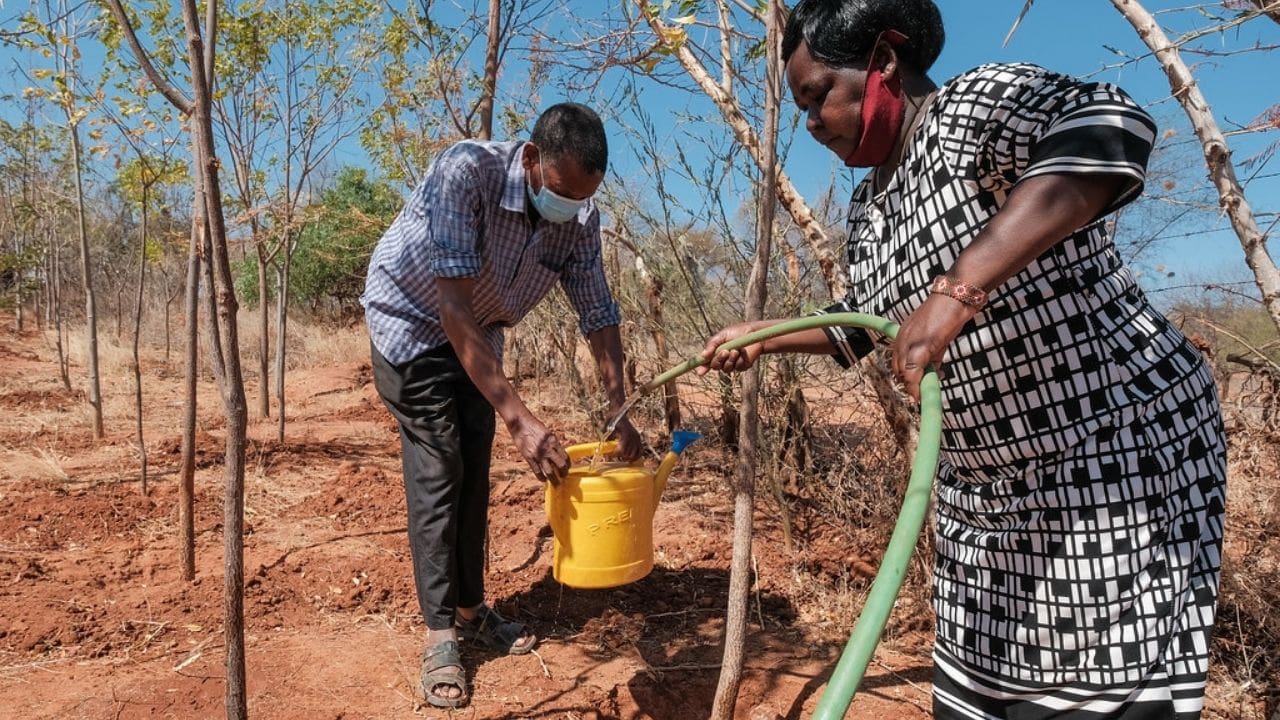

Frequently Asked Questions
Can Organic Orchards Use Synthetic Pesticides in Conjunction With Natural Pest Management Strategies?
Yes, you can combine natural pest management strategies with synthetic pesticides in organic orchards. However, it’s essential to carefully select and use synthetic pesticides that are approved for organic farming to maintain ecological balance.
What Are the Potential Drawbacks of Using Pheromone Lures in Organic Orchards?
When using pheromone lures in organic orchards, potential drawbacks may include attracting non-target species, disrupting natural pest control, and the need for frequent replacement. Careful monitoring and strategic placement can help mitigate these challenges.
How Can Soil Health Affect Pest Management in Organic Orchards?
Healthy soil is your foundation. It fosters beneficial organisms that control pests, like nematodes and fungi. Nutrient-rich soil boosts plant immunity, reducing susceptibility to infestations. Keep your soil healthy for effective pest management.
Are There Specific Companion Plants That Are More Effective at Repelling Pests in Organic Orchards?
Companion plants like marigolds, basil, and mint can effectively repel pests in organic orchards. These plants release chemicals that deter harmful insects and attract beneficial ones, promoting a natural balance in the orchard ecosystem.
How Can Biological Control Methods Be Integrated With Crop Rotation Practices in Organic Orchards?
You can integrate biological control methods with crop rotation in organic orchards by introducing natural predators like ladybugs or using pheromone traps to disrupt pest mating cycles. These methods enhance pest management while maintaining organic practices.


Hello there! I’m Logan Foster, the green-thumbed social media marketer behind the vibrant world of 1800TreeGuy.com. With roots firmly planted in arboriculture, I’ve branched out to help clients cultivate their dream outdoor spaces, one leafy canopy at a time. My knack for nurturing nature is more than a profession—it’s a way of life.
When I’m not talking trees and teaching the art of arboreal care, you can find me cheering on the Bulldogs—my alma mater’s pride and my forever team. My environmental studies there didn’t just teach me about ecosystems; they instilled a lifelong passion for protecting our planet.
Off the clock, I’m an adventurer at heart. Whether it’s trekking the Appalachian trails, pedaling down a mountain path, or crafting guides to share the wonders of the wild, I’m happiest with soil under my nails and the sun on my face. And let’s not forget Yoda, my pug sidekick. He may not have mastered the art of stillness, but his joyful grins are my daily dose of happiness.
I’m all about making connections—between people and the great outdoors and between my clients and their ideal landscape visions. My approach is personal; every tree has a story, and every garden reflects its caretaker.
If you want to green your scene or share in my outdoor escapades, give me a shout on Instagram or Facebook. Let’s cultivate a conversation and grow a community rooted in a love for the lush life.







